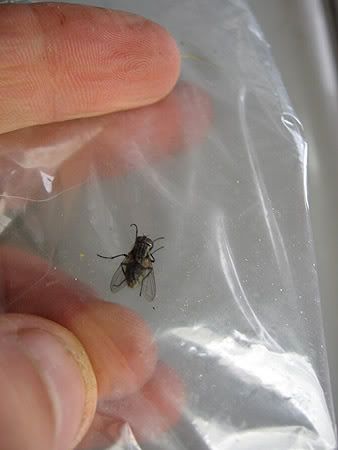365 Urban Species. #328: Housefly

Photos by urbpan. A fastidious little animal cleans up, after being manhandled in a plastic bag to be photographed.
Urban species #238: Housefly Musca domestica
Like other animals with the common name "house-" or the scientific name "domestica," the housefly is found almost exclusively in and around buildings. Where the housefly lived before there were houses (or more importantly, stables) is lost in prehistory; houseflies have lived alongside humans since before we kept track of such things. It was known to live among us when it was first given a scientific name by Linnaeus in 1758. They may originally be from Africa, but in any case seem to be tropical animals; As with some other tropical animals, like American cockroaches, they survive in the artificial tropics that we provide in our heated buildings. Houseflies are omnivorous scavengers, feeding on anything moist and organic. Their mouthparts are not built for chewing, but rather for mopping up. Most food is not moppable, so they vomit their digestive juices onto what they want to eat, transferring bacteria from the last thing they ate. In some places, such as poultry houses and crowded tropics, they are serious disease vectors. Their eggs are laid in food sources, which in rare cases includes open wounds. More often their young are found having hatched in particularly ripe garbage. Baby flies are an indication that the trash needs to be taken out more often.
